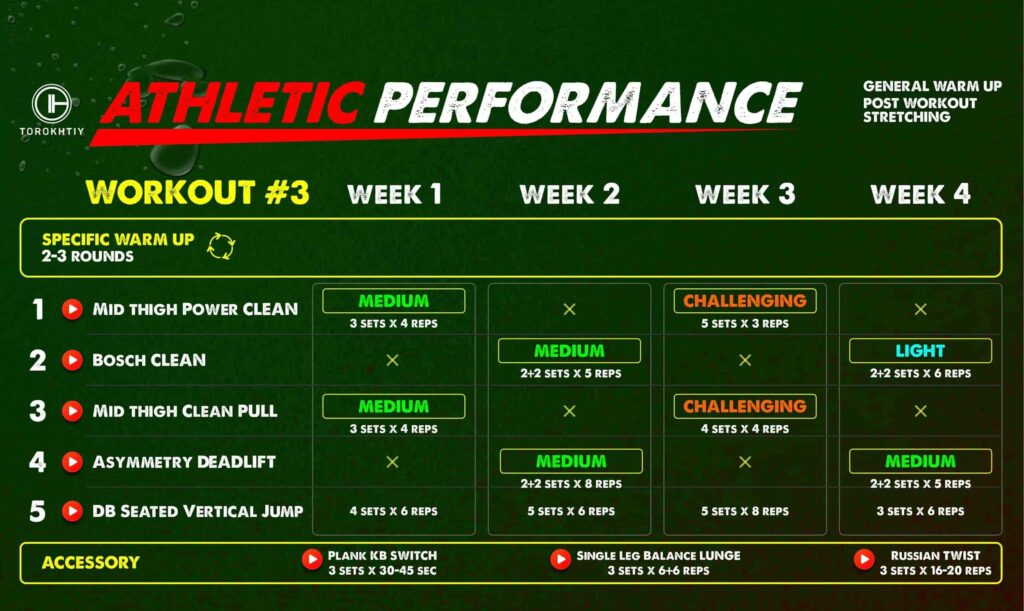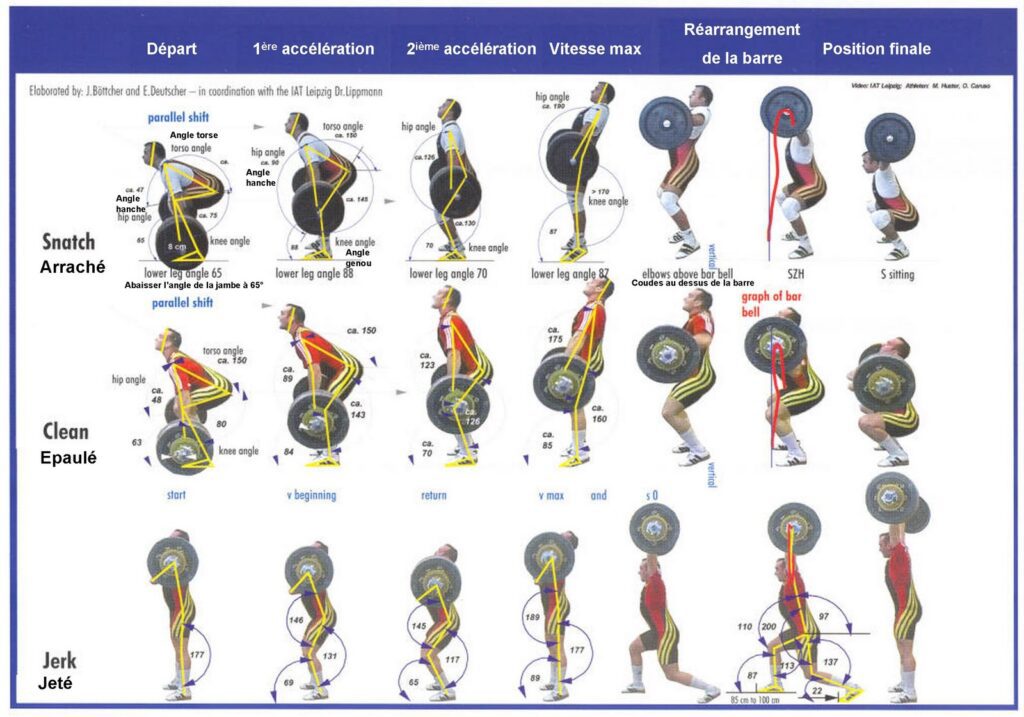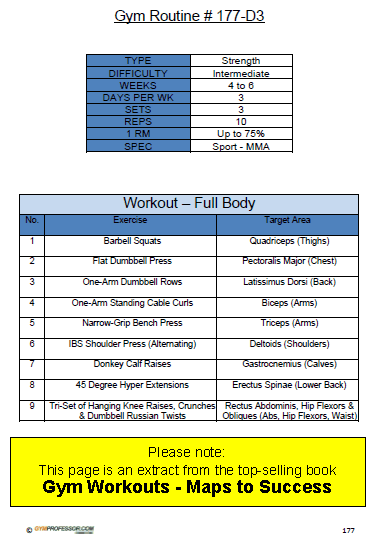Looking to take your MMA skills to the next level? Incorporating strength training into your routine as a beginner can be a game-changer. Not only will it improve your overall performance, but it will also help prevent injuries and enhance your endurance. In this article, we will explore simple and effective ways to incorporate strength training into your MMA regimen, even if you’re just starting out. So, get ready to discover the secrets of building strength and power that will take your MMA game to new heights.
Understanding the Importance of Strength Training in MMA
Strength training is a vital component of any MMA (Mixed Martial Arts) routine. Whether you are a beginner or a seasoned professional, incorporating strength training into your regimen can bring numerous benefits that enhance overall performance and prevent injuries. By focusing on increasing power, explosiveness, and muscular endurance, strength training helps fighters achieve their peak physical condition, making them more formidable opponents in the octagon.
Enhances overall performance
One of the primary advantages of strength training in MMA is its ability to enhance overall performance. By engaging in regular strength training exercises, you can improve your strength, speed, and agility. These physical attributes are crucial in MMA, where fighters rely on explosive movements and quick reflexes to overpower their opponents. Strength training can also improve cardiovascular endurance, helping fighters maintain their stamina throughout intense bouts.
Prevents injuries
Another crucial aspect of strength training in MMA is its role in preventing injuries. By strengthening your muscles, tendons, and ligaments, you can reduce the risk of strains, sprains, and other common MMA injuries. The increased stability and balance achieved through strength training also contribute to injury prevention, as fighters are less likely to lose their footing or get knocked off balance during a fight. Building a strong core, in particular, can provide protection for vital organs and improve overall body stability.
Increases power and explosiveness
Strength training is an effective way to increase power and explosiveness, two qualities that are highly sought after in MMA. By incorporating compound exercises like squats, deadlifts, and bench presses into your routine, you can build strength and power in multiple muscle groups simultaneously. Additionally, functional exercises that mimic sport-specific movements, such as kettlebell swings and medicine ball throws, can enhance explosiveness and improve your ability to generate force quickly.
Improves muscular endurance
Muscular endurance is essential for MMA fighters, as they need to maintain a high level of performance over extended periods of time. Strength training can be instrumental in improving muscular endurance by increasing the resistance and load placed on the muscles during training. By gradually increasing intensity and resistance, fighters can push their muscles to adapt, resulting in enhanced endurance. Improved muscular endurance allows fighters to keep performing at a high level, even when fatigue sets in during a fight.
Consulting with a Professional Trainer
While incorporating strength training into your MMA routine can yield significant benefits, it is essential to consult with a professional trainer to ensure you are following the appropriate strategies and techniques. Seeking guidance from an experienced MMA trainer can provide you with valuable insights on how to structure your training program, balance your workouts, and incorporate strength training effectively.
Finding a qualified strength and conditioning coach who specializes in MMA training is another recommended step in maximizing the benefits of strength training. A knowledgeable coach can design a personalized program tailored to your specific needs and goals. They can also help assess your current physical condition and limitations, ensuring that the exercises and techniques selected are safe and suitable for your level of fitness.
Discussing your individual goals and limitations with the trainer and coach is crucial during this consultation process. Whether you are aiming to compete professionally or simply want to improve your skills and fitness, providing clear goals will help them develop a training program that aligns with your objectives. Additionally, communicating any previous injuries or physical limitations will allow the trainer to adapt the program accordingly and tailor exercises that minimize the risk of further injury.

Establishing a Solid Foundation
Before diving into intense strength training, it is important to establish a solid foundation. Mastering basic techniques and movements is crucial to ensure proper form and technique during strength training exercises. This foundation can be built through practicing fundamental exercises like bodyweight squats, push-ups, and lunges. Focusing on proper body alignment and range of motion is essential in building a strong foundation and reducing the risk of injuries.
Developing core strength is another key aspect of establishing a solid foundation in strength training for MMA. A strong core not only improves balance and stability but also supports the movements and power generated in strikes and takedowns. Exercises such as planks, Russian twists, and hanging leg raises can effectively target and strengthen the core muscles.
In addition to core strength, building cardiovascular endurance is essential for MMA fighters. Incorporating cardiovascular exercises like running, cycling, or swimming into your routine will help improve your stamina and allow you to sustain high levels of output during training and fights. Building cardiovascular endurance can also contribute to faster recovery between rounds, ensuring you can maintain a competitive edge throughout the entire fight.
Improving flexibility and mobility is the final component of establishing a solid foundation for strength training in MMA. Stretching exercises, yoga, and mobility drills can help increase joint range of motion and decrease the risk of injuries. Enhanced flexibility and mobility will allow fighters to execute techniques more effectively and with greater ease. Additionally, it reduces muscle tension, promoting better recovery and preventing muscle imbalances.
Choosing the Right Strength Training Exercises
When incorporating strength training into the MMA routine, it is crucial to choose the right exercises that will yield the desired results. A combination of compound exercises, functional exercises, and targeted exercises should be employed to achieve a well-rounded and comprehensive training program.
Compound exercises that engage multiple muscle groups simultaneously are particularly beneficial for MMA fighters. They mimic the complex movements performed during fights and help develop overall strength and power. Squats, deadlifts, lunges, and bench presses are examples of compound exercises that promote full-body engagement and build functional strength.
Functional exercises mimic the specific movements and demands of MMA, making them highly valuable for improving sport-specific performance. Kettlebell swings, medicine ball throws, and battle rope exercises are examples of functional exercises that enhance explosiveness and power, mirroring actions such as throwing strikes or grappling opponents.
Targeted exercises that isolate specific muscle groups should also be included in the strength training program. These exercises can help address any muscle imbalances and weaknesses that may be present. For example, bicep curls, tricep dips, and lateral raises can target the upper body, while leg curls, calf raises, and glute bridges can focus on the lower body.
Adding variety and progression to strength training exercises is crucial for continuous adaptation and improvement. By periodically changing the exercises, adjusting the resistance and intensity, and incorporating new techniques or equipment, fighters can prevent plateaus and keep their muscles challenged. This not only prevents boredom but also encourages continued growth and development in strength and performance.

Designing a Structured Training Program
Designing a structured training program is essential for maximizing the benefits of strength training in MMA. By establishing clear goals and objectives, creating a balanced workout schedule, incorporating appropriate rest and recovery periods, and tracking progress, fighters can optimize their training and ensure steady improvement.
Setting clear goals and objectives is the first step in designing a structured training program. Whether it is to increase overall strength, improve explosiveness, or develop specific muscle groups, having specific targets will guide the selection of exercises and strategies. It is essential to set realistic and achievable goals to maintain motivation and track progress effectively.
Creating a balanced workout schedule is crucial to ensure that all aspects of training, including strength training, are adequately addressed. This includes dedicating specific days or sessions for strength training, cardiovascular exercise, and MMA skill training. Balancing the frequency and intensity of each training component is key to avoiding overtraining and excessive fatigue.
Incorporating appropriate rest and recovery periods is equally important in a structured training program. Overtraining can lead to decreased performance, increased risk of injuries, and overall burnout. Fighters should schedule regular rest days to allow their bodies to recover and adapt to the training stimuli. Active recovery activities like yoga, light stretching, or low-intensity cardio can also be incorporated.
Tracking progress and making adjustments should be an ongoing process in any training program. Keeping records of weights lifted, repetitions performed, and improvements in performance allows fighters to monitor their progress over time. These records can also help identify areas that require further attention or adjustments to the training program. Regularly reassessing and modifying the program based on progress and goals will ensure continued growth and improvement.
Warming Up and Cooling Down
Before jumping into the intensity of strength training, it is crucial to warm up and prepare the body for the demands ahead. A dynamic warm-up routine should be performed to increase body temperature, activate muscles, and improve joint mobility. Dynamic stretches, such as leg swings, arm circles, and high knees, can be incorporated into a warm-up routine to prepare the body for the ensuing workout.
In addition to dynamic warm-up exercises, joint mobility exercises should be included to prevent injuries and improve range of motion. Rotating joints and performing controlled movements that focus on joint health can help increase joint lubrication, decrease stiffness, and reduce the risk of strains or sprains during training. Ankle circles, shoulder rotations, and wrist circles are examples of joint mobility exercises that can be incorporated into the warm-up routine.
Static stretching is often performed during the cool-down phase to improve flexibility and promote muscle recovery. Stretching exercises that target major muscle groups, such as the hamstrings, quadriceps, and shoulders, can be held for 15-30 seconds to increase muscle length and improve mobility. Static stretching can help prevent muscle imbalances and decrease the risk of post-workout soreness.
Incorporating foam rolling and self-massage techniques into the cool-down routine can also aid in muscle recovery and injury prevention. Foam rolling specific muscle groups, such as the calves, quads, and lats, can help release tension and adhesions in the muscles, improving circulation and promoting faster recovery. Self-massage tools, such as massage balls or a lacrosse ball, can be used to target specific areas of soreness or tightness.

Implementing Strength Training Sessions
Once the warm-up and cool-down routines are completed, it is time to implement the strength training sessions into the MMA routine. It is important to integrate strength training into the weekly schedule in a strategic manner to optimize its benefits and avoid excessive fatigue or overtraining.
Determining the optimal training frequency and duration depends on the individual’s goals and current fitness level. As a general guideline, strength training sessions should be performed 2-3 times per week for beginners, gradually increasing to 3-4 times per week for more advanced fighters. The duration of each session can range from 45 minutes to 1 hour, depending on the exercises selected and the individual’s capacity.
Gradually increasing intensity and resistance is essential to challenge the muscles and continue making progress. Starting with lighter weights and gradually adding resistance over time allows the muscles to adapt and grow stronger. However, it is important to ensure that proper form and technique are maintained throughout each exercise, even when the resistance is low. Using momentum or sacrificing form for heavier weights can lead to injuries or hinder progress.
Using proper form and technique is another crucial aspect of strength training in MMA. Following the guidance of an experienced trainer or coach during the initial stages is recommended to ensure that proper technique is learned from the start. Performing exercises with correct form not only maximizes their benefits but also reduces the risk of injuries. It is also important to listen to your body and avoid pushing through pain or discomfort that may indicate improper form or excessive strain on the muscles.
Balancing Strength Training with MMA Training
Balancing strength training with MMA training is essential to avoid excessive fatigue, overtraining, and potential injuries. Scheduling strength training sessions strategically within the weekly routine is crucial to optimize recovery and overall performance.
Avoiding excessive fatigue and overtraining is important to prevent burnout and maintain optimal performance. MMA training already places significant demands on the body, and adding strength training can further intensify the physical stress. Therefore, it is important to ensure that the overall workload is manageable and that enough rest and recovery periods are incorporated into the weekly routine.
Scheduling strength training sessions strategically is key to maintaining balance. It is recommended that strength training sessions be scheduled on days when the intensity of MMA training is lower to allow for adequate recovery. For example, strength training may be scheduled on days when there are no sparring sessions or immediately following lighter training days. This approach allows for optimal performance during both strength training and MMA training.
Modifying intensity based on MMA training demands is another way to balance strength training with MMA training effectively. During periods of increased intensity in MMA training, such as leading up to a fight or during intense training camps, strength training intensity may need to be adjusted or scaled back to prevent excessive fatigue or overtraining. This can include reducing the number of sets, lowering the overall volume, or decreasing the resistance used during strength training exercises.
Allowing sufficient recovery between workouts is crucial for overall progress and injury prevention. Training consecutive days without adequate recovery can lead to decreased performance and increased risk of injuries. Scheduling rest days or incorporating active recovery activities between strength training sessions and MMA training sessions allows the body to recover, repair, and adapt to the training stimuli.

Incorporating Functional Training Drills
Functional training drills are an excellent way to enhance performance in MMA by improving power, strength, agility, and specific skills required in the sport. By incorporating these drills into the strength training program, fighters can develop sport-specific abilities that directly translate into their performance in the octagon.
Explosive movements are essential in MMA for generating power and overwhelming opponents. Exercises like box jumps, explosive push-ups, and kettlebell swings can be included in the strength training routine to develop explosive power. These exercises focus on fast, powerful movements that simulate the explosive actions needed in striking, takedowns, and escapes.
Resistance training is crucial for developing grappling strength, which is vital in MMA. Exercises such as pull-ups, rows, and Romanian deadlifts can target the muscles used in grappling movements, such as pulls, locks, and holds. By progressively increasing the resistance, fighters can improve their ability to generate force and control their opponents during grappling exchanges.
Plyometric exercises incorporate explosive movements with quick changes in direction, promoting agility and quick reaction times. Exercises such as box jumps, lateral jumps, and medicine ball slams can be included to improve agility, coordination, and speed. These exercises train the muscles to generate power rapidly and efficiently, mimicking the explosive movements required in MMA.
Calisthenics, or bodyweight exercises, are ideal for developing strength and endurance without the need for any equipment. Push-ups, pull-ups, squats, and lunges are examples of calisthenic exercises that can target major muscle groups, improving overall body strength. Incorporating these exercises into the routine ensures a well-rounded strength training program that can be performed anywhere, making it accessible for MMA fighters at any level.
Staying Consistent and Persistent
Making strength training a regular habit is crucial for long-term progress and success in MMA. Consistency allows the body to adapt and grow stronger over time. It is important to stay persistent and committed, particularly in times when progress may seem slow or when faced with challenges or plateaus.
Making strength training a regular habit involves incorporating it into your lifestyle and treating it as an essential part of your routine. Set aside dedicated time for strength training sessions, and prioritize them alongside your MMA training. Establishing this habit will help make it a seamless and effortless addition to your overall training regimen.
Pushing through challenges and plateaus is an inevitable part of any training journey. There will be times when progress may seem slow, or when you may encounter difficulties in performing certain exercises or reaching specific goals. It is important to stay persistent and maintain a positive mindset during these times. Seeking support from a trainer, coach, or fellow MMA practitioners can provide motivation, guidance, and accountability to help overcome challenges and continue progressing.
Maintaining motivation and discipline is crucial for consistency in strength training. Set specific goals and remind yourself of the reasons why you started pursuing MMA and strength training in the first place. Visualize your progress and the benefits you will gain from your dedication. Surround yourself with a positive support system that encourages and supports your efforts. Celebrating progress and achievements along the way keeps motivation high and fosters long-term commitment to strength training.
In conclusion, incorporating strength training into your MMA routine as a beginner is a valuable investment in your overall performance and injury prevention. Understanding the importance of strength training in enhancing performance, preventing injuries, increasing power and explosiveness, and improving muscular endurance is crucial. By consulting with a professional trainer, establishing a solid foundation, choosing the right exercises, designing a structured training program, and incorporating functional training drills, you can optimize the benefits of strength training. Balancing strength training with MMA training, staying consistent and persistent, and maintaining motivation and discipline are also vital for long-term progress and success. By following these guidelines and dedicating yourself to strength training, you can become a stronger, more well-rounded, and successful MMA fighter.

